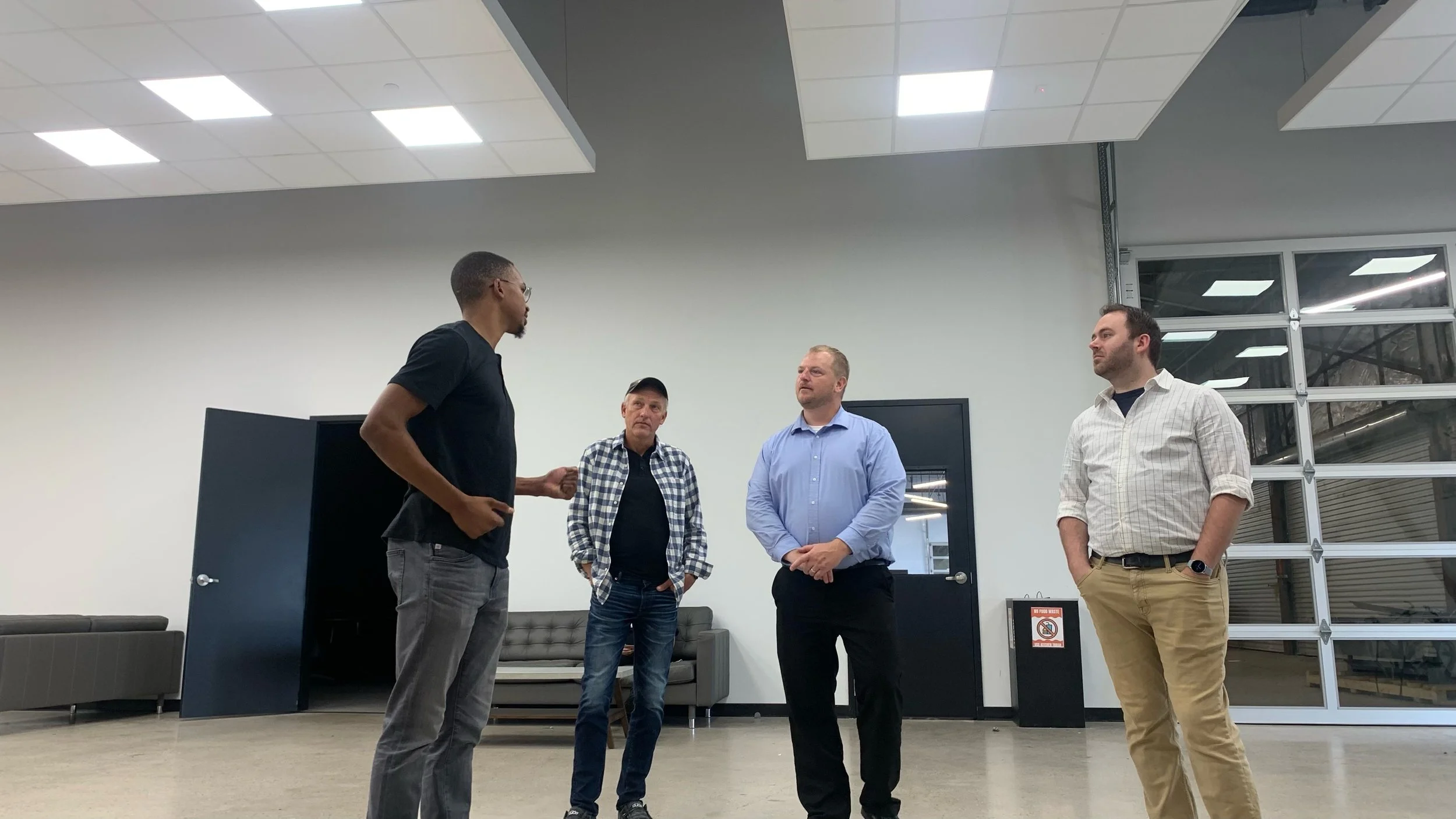BLOG #0006
WHAT IS N.I.T.M.O.I. AND HOW CAN YOU IMPLEMENT IT AT YOUR OWN COMPANY?
In the Spring of 2021, The UNSPACE team met at a beach house in Port Aransas, TX for a company retreat. There was a ping-pong competition, electric bike races on the beach and more than a few outings to the local fish-fry restaurants— As much fun as we had, our retreat was not just about recreation—we had another focus that took up the majority of our time: N.I.T.M.O.I.
Clients, friends and our neighbors at the East End Maker Hub will often hear UNSPACE team members throwing around the term NITMOI (pronouncing it like a fancy French dish, Nit-Moi), but what is it exactly?
NITMOI is an acronym for ‘Necessity Is The Mother Of Invention’, at its most basic it was a team brainstorming process that was all about finding ways our company could make a positive impact on the world.
This process birthed our current side-projects; Power-Tool Safety, Energy Storage, Whole Home Energy Management, Democratized Plastic Recycling and Disaster Response Drones.
The NITMOI process was a fantastic experience for UNSPACE, not just for team-building but as a way of sharpening our skills as problem solvers and identifying radical business pitches that could make positive changes for humankind.
While our primary missions at UNSPACE continue to be our gravitational research projects and client services for innovation and product development, we set time aside to this very day to incubate these internal projects.
If you would like to try a NITMOI team building exercise, we recommend taking it on with the following four stages:
Stage 1: Make a list of problems facing your community/country or the world at large.
At the earliest stage, your team should write down problems. As many problems as you can possibly think of: big problems, little problems, even unsolvable problems. During our problem identification phase we included everything from oil dependence, deforestation, voting system cyber security, lack of tidal power-plants in the United States, space debris, inner-city food deserts and even vehicle blind spots.
Stage 2: Determine solutions to these problems, no matter how ‘out there’ your solutions might be.
Stage 2 is the most fun; you get together with your team and determine how these problems could be solved. You’re not going to be concerned with feasibility, budget or even practicality until stage 3, so any and all solutions are welcome. Conversations at this point can even get a little bit outrageous:
How do you solve deforestation? Why, you work with farmers to crossbreed a new form of builder grade bamboo that replaces all existing lumber.
How do you make bikes safer? You attach a sensor to bike helmets that alerts drivers by communicating with their on-board computers.
How do you solve the growing problem of orbital space debris? With autonomous “tow-truck” satellites that sweep debris and take it out of earth’s orbit, of course.
Stage 3: Form project pitches based around the findings of stage 2
Things get reigned in for stage 3. At this point your team should no longer have a list of problems, but rather a long list of business ideas, invention concepts and some radical solutions. Your team should take some time to reflect and research on these solutions to determine A) Which of these ideas are relevant to skillsets/facilities/resources available to your team and B) If the project plan is feasible with the appropriate budget/investors and available time.
Stage 4: Democratically elect which of these project pitches should continue as internal projects.
You should have lost a number of ideas in stage 3 due to infeasibility or other disqualifications discovered in research, but, even still, by the time you reach the final stage, you should have a long list of projects, inventions and business plans. Now your team will decide how many projects you will pursue and then democratically elect which projects will continue to the development stage.
Who knows, your team might have an idea that doesn’t just make money, but makes the world a better place for all of us.




